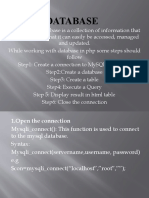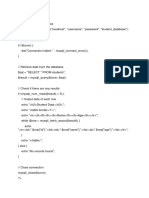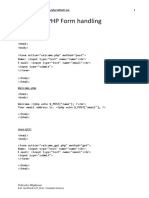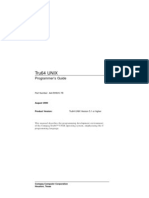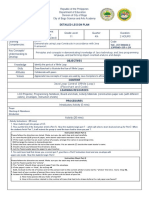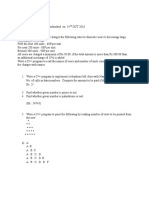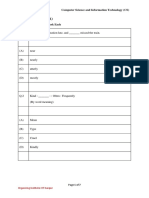0% found this document useful (0 votes)
13 views9 pagesPHP Database Connection
The document provides PHP code examples for establishing a database connection, creating a database and table, inserting data, and implementing a login system. It includes HTML and CSS for a login interface, as well as code for fetching and displaying data from a database. The examples illustrate basic CRUD operations and user authentication using MySQL with PHP.
Uploaded by
Wipro pvtCopyright
© © All Rights Reserved
We take content rights seriously. If you suspect this is your content, claim it here.
Available Formats
Download as DOCX, PDF, TXT or read online on Scribd
0% found this document useful (0 votes)
13 views9 pagesPHP Database Connection
The document provides PHP code examples for establishing a database connection, creating a database and table, inserting data, and implementing a login system. It includes HTML and CSS for a login interface, as well as code for fetching and displaying data from a database. The examples illustrate basic CRUD operations and user authentication using MySQL with PHP.
Uploaded by
Wipro pvtCopyright
© © All Rights Reserved
We take content rights seriously. If you suspect this is your content, claim it here.
Available Formats
Download as DOCX, PDF, TXT or read online on Scribd
/ 9










